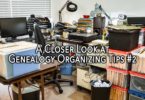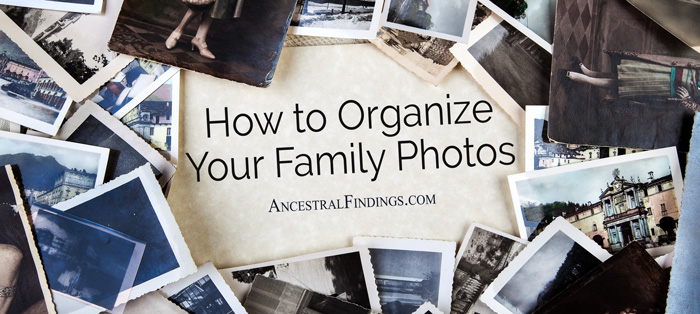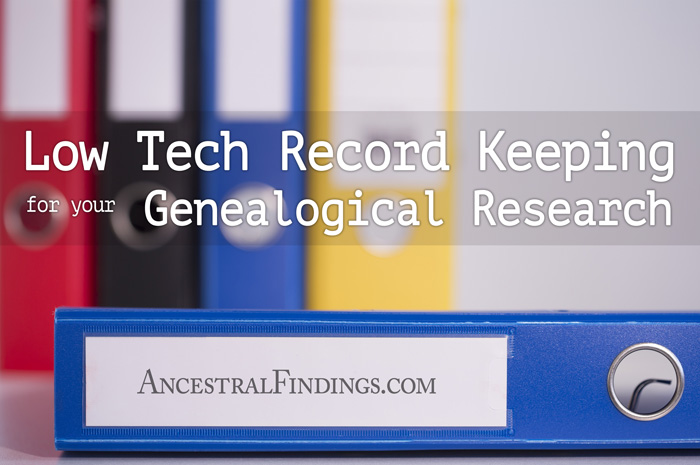When you do a lot of genealogy research, you can find papers, photos, contact information, and even artifacts piling up in your workspace. If you don't get these things organized, it becomes a lot more difficult to locate what you need when you need it. You may even lose some valuable research due to being disorganized. Even beginning genealogists can find their workspace getting cluttered before too long. Veterans may have an entire room filled with things that need to be organized. The good news is that it is easy to organize your genealogy home office so you can find things easily. Here are some tips to do it the proper and simple way.
Create Genealogy Binders by Family
One of the best ways to organize documents is to divide them up by family and create binders for them. Label the binders by family surname, making sure to label the front and spine, so you can see the family you want easily on a bookshelf. Gather your documents pertaining to each family and organize them according to types, such as birth records, death records, marriage records, newspaper clippings, financial documents, letters, miscellaneous information, and any other category which you believe will be appropriate for your records.
Once you've divided the documents by both family and record type, arrange each category by chronological order. Then, put the documents in plastic sheet protectors, and secure them in the proper order in their appropriate binders. Organize the binders in alphabetical order on a bookshelf. When you are looking for a document, you will always know exactly where to find it. Always scan documents and store them on your computer in electronic folders arranged the same way you did with the physical binders, so you always have an electronic backup of your research materials. – Read More
Label and Store Your Photos
One of the easiest things to do in genealogy is let photos pile up. Even our ancestors did this. If you've ever looked through an older or elderly relative's house before or after they have passed on, you may have discovered shoe boxes, and even drawers full of loose, unlabeled photos. Don't let this happen to your carefully collected genealogical photographs. Organizing them will help both you and future generations use these collections better.
Much like you did with the documents, organize photos into piles by family, and in chronological order. You don't need to categorize them unless you want to. Simple family and date designations will do. Label the backs of the ones with people you can identify, using an archival safe pen. If you have unidentified people in photos, designate that, as well as any ideas you have as to who they might be, on the backs of the photos. Then, get photo albums for each family, and put the photos in them in chronological order to the best of your knowledge as to the time, or approximate time, they were taken. Label the spines of the photo albums with the family surname, and organize them on a bookshelf in alphabetical order. As with the documents, scan your photos, label them, and arrange them into electronic photo albums on your computer in the same way you did in the physical albums. It is important to always have electronic backups of your research materials. – Read More
Get Your Artifacts Properly Stored and Organized
If you have any artifacts or family heirlooms, first make sure they are being stored properly for the best way to preserve them. You can look up information online for how to store things like old textiles, ceramics, precious metals, non-precious metals, and more. Once they are properly protected, label them, including who they belonged to, who made them (if applicable and known), the approximate date of their creation or acquisition by your ancestors, and their location of origin (if you know it).
Store smaller artifacts in plastic tubs labeled by family surname, and keep in a closet. Larger artifacts can also be kept in a closet and organized by family. If you want to display some of your artifacts, do so in a safe location where children and pets can't damage them and make a prominent label for them so visitors will know their significance to your family. Clean them regularly if they are kept in the open, on display, but be sure to use proper cleaning techniques, which you can also look up online. If you find you have more artifacts than you want to keep, you can donate them to a local archive or historical society. Just be sure you have correctly labeled them first, so the place you donate them to will know the best thing to do with them. – Read More
Organize Your Genealogy Contacts
During the course of genealogy research, you will collect a lot of different phone numbers, fax numbers, emails, and websites. Organize them by category, then alphabetically, and put them in both your phone and in a Word doc on your computer.
Organize as You Go Along
Beginning now, organize every piece of paper, photograph, phone number, and genealogy artifact that comes your way as soon as you get it. This way, you won't get any additional buildup of clutter in your genealogy office. Here are some things you can do as soon as things come into your office:
- Put contact information for newly discovered distant relatives, genealogy vendors, historical societies, and archives, places to get vital statistics, and professional researchers in your phone or on a Word doc on your computer (organized by category) as soon as you receive them.
- File documents in physical binders, and also scan and store electronic versions of them on your computer
- Label photographs and put them in appropriate albums. Also, scan, create and file electronic versions of them on your computer.
- Label artifacts and store them in an appropriately designated place, or donate them to an appropriate archives center or historical society
Once you do all of these things, you will soon find that your genealogy home office is no longer a chaotic place, but a well-ordered place where you can find exactly what you need, when you need it, with ease. No more clutter will pile up, either. You will have a perfect, smoothly working genealogy home office that will be a pleasant place in which to work. Your genealogy research will also be better and more accurate for it, which is the goal of any genealogist.




